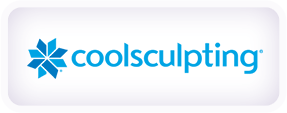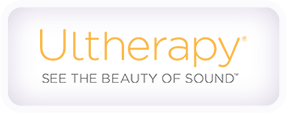
Surgeons are often faced with a dilemma when a teenager arrives at their center seeking cosmetic surgery. It isn’t always clear if the procedure is in their best interest, so it’s best to carefully consider the situation. Teenagers often face peer pressure and bullying which leads to self-esteem issues – they might be seeking a treatment to please others rather than themselves. On the other hand, they might be dealing with obvious physical problems, such as prominent ears, breast asymmetry or gigantomastia. The American Society of Plastic Surgeons (ASPS) determined in a 2015 study the number of cosmetic procedures carried out on teenagers. 64,470 surgical procedures and 161,700 minimally-invasive procedures were performed. Cosmetic surgery can reduce the psychological burden of teens, particularly those seeking breast surgery. When it comes to approving the procedure, two important conditions should be met: a cooling-off period and parental consent.
Cooling-off period:
A cooling-off period is a stage between the initial consultation and confirming the procedure. This period allows the person seeking surgery to carefully consider the operation and assess the risks. Guidelines by the Medical Council of New South Wales require minors to have a 3 month cooling-off period. The Medical Board of Australia stipulates the same period, along with a mandatory assessment by a psychologist or psychiatrist. Teens can be hasty and impulsive with their decisions, so a cooling-off period is a great way for them to reflect before committing to the surgery.
Parental consent:
The consultation should be done in the presence of a parent or legal guardian, even if the teen is above legal consenting age. Informed consent is also important: the doctor should thoroughly explain the risks, benefits and potential complications of the surgery. If the teen is experiencing severe psychological stress, then a meeting with a psychologist should be arranged. ASPS states that the best outcomes are in cases where the teen initiates the request for treatment, has realistic goals, and has reached sufficient maturity. Local laws concerning the consent of minors should also be followed.
Recommendation:
Cosmetic surgery can raise the self-esteem and improve the emotional well-being of teenagers. Teens typically turn to these procedures for aesthetic reasons or obvious problems in their appearance. Common procedures for teenagers are breast surgery, prominent ears and acne scarring. We strongly believe that the teen should reach the age of 18 for any breast reduction; for breast augmentation they should be 22, according to the FDA. If the problem is prominent ears, the operation can be carried out at a younger age, especially if they are facing bullying. Following these guidelines as well as local laws related to minor consent can ensure that medical ethics are fulfilled.
 Many people who are overweight turn to plastic surgeons for a solution. There is a misconception that liposuction and body contouring are for obese patients, but that is not true. In general, plastic surgery should be pursued by people in good health: most plastic surgeons recommend a BMI below 30 for those seeking treatment. This is due to the potential complications of surgery and unfavorable outcomes. People with obesity should first consider weight loss options such as diet, exercise and bariatric surgery. Once their BMI is within an appropriate range, plastic surgery becomes a suitable option.
Many people who are overweight turn to plastic surgeons for a solution. There is a misconception that liposuction and body contouring are for obese patients, but that is not true. In general, plastic surgery should be pursued by people in good health: most plastic surgeons recommend a BMI below 30 for those seeking treatment. This is due to the potential complications of surgery and unfavorable outcomes. People with obesity should first consider weight loss options such as diet, exercise and bariatric surgery. Once their BMI is within an appropriate range, plastic surgery becomes a suitable option.
Obesity in Gulf Countries:
Nine Arab countries have some of the highest obesity rates in the world, according to a World Health Organization report published in 2016. The prevalence of obesity in Bahrain is 29.8%; Saudi Arabia and Kuwait have even higher rates of 35.4% and 37.9% respectively. Speculated reasons are the high consumption of fast food and sugary beverages, sedentary lifestyles, and lack of exercise. The Middle East and North Africa region also has the highest rate of increase in diabetes in the world, likely due to economic development, genetic risk and low exercise. These factors have made bariatric surgeries very popular in the region; both men and women turn to treatments such as gastric bypass and sleeve gastrectomy for weight loss.
Health Risks of Plastic Surgery:
Obesity increases the risk of many co-morbid conditions, such as diabetes, cancer, cardiovascular disease and hypertension. It also makes plastic surgery more dangerous, as potential complications can be deadly. During the procedure, deep vein thrombosis or blood clots that go up to the lungs are a risk factor. After the surgery, obese patients are more likely to suffer from heart attacks and wound infections. Since the aesthetic outcome of the surgery is unfavorable, many plastic surgeons refuse to operate on patients with obesity.
Recommendation:
People who are overweight often turn to plastic surgeons for a weight loss solution, but this is the wrong step as the health risks are high. They should first aim to lose weight through diet and exercise, with bariatric surgery as another option for weight loss. When their BMI is within an appropriate range (below 30), they can then pursue plastic surgery to obtain the changes they desire.
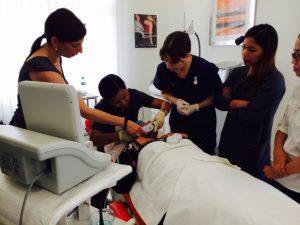 As we get older, the aging process inevitably takes a toll on our skin. Even a thorough skincare regimen and regular sleeping habits can’t stop wrinkles from appearing. Luckily, there are aesthetic procedures that offer an easy way to eliminate fine lines and wrinkles. Ultherapy is a popular non-invasive procedure that relies on ultrasound to lift skin on the chest, neck and face. Collagen production is stimulated in the skin’s foundation, which lift’s the tissue over the following 2 to 3 months. It’s a “lunch hour” treatment with no downtime or aftercare required. The result is healthy, youthful skin that can diminish the impact of aging on your appearance.
As we get older, the aging process inevitably takes a toll on our skin. Even a thorough skincare regimen and regular sleeping habits can’t stop wrinkles from appearing. Luckily, there are aesthetic procedures that offer an easy way to eliminate fine lines and wrinkles. Ultherapy is a popular non-invasive procedure that relies on ultrasound to lift skin on the chest, neck and face. Collagen production is stimulated in the skin’s foundation, which lift’s the tissue over the following 2 to 3 months. It’s a “lunch hour” treatment with no downtime or aftercare required. The result is healthy, youthful skin that can diminish the impact of aging on your appearance.
Overview on Skin Tightening:
Non-invasive skin tightening procedures are on the rise: a 2017 study by the American Society of Plastic Surgeons found an increase in frequency by 9%. The three most common technologies are radio frequency (RF), IPL/RF, and ultrasound. RF treatments rely on radiofrequency energy to heat the outer layers of skin and trigger collagen production. The drawback of RF treatments is the unfocused generation of heat, which sometimes causes fat atrophy. IPL/RF treatments combine intense pulsed light (IPL) with radiofrequency to heat deeper skin layers. This addition allows the provider to target the skin at multiple levels in the treatment. Popular brands for RF treatments are Thermi RF and Exilis, while those for IPL/RF treatments are Refirme and VelaShape.
A third option is ultrasound treatment, of which Ultherapy is the most popular brand. The advantage of ultrasound over radiofrequency is that the focused beams penetrate deeply in the tissue, targeting mainly the fascia (band of connective tissue beneath the skin that is primarily collagen). Ultrasound treatments have been used in medicine for decades, and they have a great record for safety.
Ultherapy Procedure:
Your provider will first cleanse your skin and identify the specific areas for treatment. Afterwards, the ultrasound gel is applied and the smooth treatment applicator is pressed against the skin. The provider will then use ultrasound imaging to determine the optimal placement for the treatment energy, and then deliver that energy below the skin’s surface. You might feel mild discomfort due to the heat of the waves. The length of the treatment depends on the treatment area: face and neck procedures take about 60-90 minutes.
Key Benefits:
The primary benefit of Ultherapy is that it can turn back the clock on your skin’s appearance. Tightening loose skin helps to counteract the aging process and give you a youthful appearance for a while longer. It is also non-invasive, which makes it ideal for patients looking to avoid surgical procedures. Patients who cannot undergo surgery due to health problems can choose Ultherapy as an alternative. Ultherapy can also be customized to match your skin’s demands. The amount of ultrasound energy used can be adjusted, with greater depth leading to more positive changes. As a simple outpatient procedure, you will not require downtime or post-treatment care.
Ultherapy can also be combined with injectables and laser resurfacing treatments to achieve a much better result for your skin. The outcome is dependent on many factors, including age, patient anatomy, and co-morbid medical conditions. These factors will be discussed with the provider to ensure you the best treatment possible.
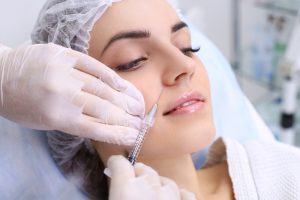 When you buy a treatment, you are paying for two things: the quality of the product and the skill, training and experience of the doctor. Cheap does not mean preferable when it comes to medical procedures. Patients should be suspicious of cheap prices, and investigate exactly why the doctor is “cutting corners” when it comes to the price.
When you buy a treatment, you are paying for two things: the quality of the product and the skill, training and experience of the doctor. Cheap does not mean preferable when it comes to medical procedures. Patients should be suspicious of cheap prices, and investigate exactly why the doctor is “cutting corners” when it comes to the price.
It can be a dilemma for the patient to decide on which doctor to seek treatment with, as there are many factors involved. You are within your rights to be well-informed when it comes to the health decisions you make. The following are important considerations to keep in mind when deciding on a treatment.
5 Factors to Consider:
– Education of the doctor: you should ensure that the doctor has the appropriate license and a degree from a reputable university. The license should be from a local authority governing the medical practice.
– Experience of the doctor: a history of carrying out the procedure successfully is important. The number of years a doctor has practiced in the field is also an indicator of their experience. Doctors that are highly skilled in a procedure often charge more, as they are more in demand.
– Specialty of the doctor: Whether the doctor is specialized in the procedure should be accounted for. For example, Botox and fillers are usually carried out by plastic surgeons and dermatologists. They can also be performed by doctors with rigorous training in the area and a valid qualification. Otherwise, the patient is not advised to follow through if the doctor does not have the necessary credentials.
– Quality of the products: only products from a reputable manufacturer with a noted safety record are acceptable. A patient has a right to be well-informed regarding the products used. When it comes to Botox and fillers, there is a wide variety of products in the market, and not all are reliable. The patient should make sure that the products used are high quality and meet the safety standards. This is also a determining factor that goes into the cost chosen by the provider.
– Reputation of the facility: the medical center should be examined to make sure it’s trustworthy. Is the facility officially licensed by medical authorities? There are underground clinics that are not licensed to perform medical procedures. These are illegal and dangerous so the patient should not seek treatment at those locations.
Conclusion:
Sometimes patients are dissuaded by the price that is offered by a doctor, which compels them to seek a lower price. However, patients should evaluate the price against the factors above when deciding to go ahead with the procedure. Botox, dermal fillers and laser hair removal all carry small but potential risks. When you’re under the care of the wrong hands, that risk is higher. Of course, things can go wrong with even the most experienced physicians. However, the ones with training and experience can respond quickly to fix the problem. Remember that you are paying for both the product and the expertise of the doctor, as this will aid you in choosing the best course of treatment.
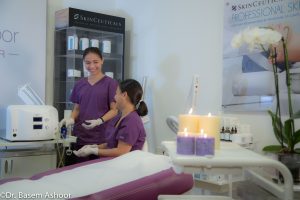 SilkPeel Dermalinfusion is a popular treatment which improves the appearance of the skin. It takes about half an hour, is gentle and painless, and requires no rest time. This treatment exfoliates the outer layer of the skin, removing dead skin cells to create a fresh and healthy look. It is similar to microdermabrasion, which also cleanses the outer layer through exfoliation. The main difference is that SilkPeel involves the infusion of serums, which can target specific skin conditions. The treatments are safe to carry out on any age or skin type as the procedure is customizable.
SilkPeel Dermalinfusion is a popular treatment which improves the appearance of the skin. It takes about half an hour, is gentle and painless, and requires no rest time. This treatment exfoliates the outer layer of the skin, removing dead skin cells to create a fresh and healthy look. It is similar to microdermabrasion, which also cleanses the outer layer through exfoliation. The main difference is that SilkPeel involves the infusion of serums, which can target specific skin conditions. The treatments are safe to carry out on any age or skin type as the procedure is customizable.
Microdermabrasion (old technique):
Microdermabrasion is a quick, simple cosmetic treatment with no downtime. It is a dry procedure in which fine crystals or diamonds are used to exfoliate the outer layer of the skin. Two types of crystals are commonly used: aluminum oxide and sodium bicarbonate. The latter is often preferred as the crystals are more gentle on the skin. This makes them an ideal choice for a facial or relaxation treatment. The small risk with crystals is that they can be released into the system, and inhaled or ingested by the patient. However, this is a minor risk and should not dissuade patients from seeking this treatment.
The other form of microdermabrasion involves diamonds rather than crystals. Dead skin cells are gently rubbed away using the diamond-based end of an application device. The cells are removed easily due to the roughness of the diamond surface. The benefits of this technique are that it can reach areas near the eyes and mouth as well as there being no risk of particles entering the body. The detriment is that it can be a harsher treatment than crystal microdermabrasion.
Why SilkPeel?
We believe that the SilkPeel technique is more effective than dry microdermabrasion as it combines abrasion and vacuum extraction of the skin. This 3-in-1 technique exfoliations, deeply cleanses the pores, and infuses serums into the skin. The pores are opened easily with this procedure which makes the infusion of the serums more effective. The choice of serum depends on the specific skin problem: aging, excessive pigmentation, dry skin, blemishes, or rough texture.
SilkPeel Procedure:
First, the specialist cleans the face to get rid of any makeup, dirt or debris present. A clarifying mask can be applied for a few minutes to pull out impurities and decongest pores. After that, the SilkPeel hand piece is applied to the skin, gently tracing over the treatment area. That area is typically the face and neck, but can also be other areas of the body. The skin is exfoliated and dead cells are suctioned away, while the serum penetrates a deeper layer. Vitamins, minerals and anti-oxidants delivered by the serum rejuvenate the skin. We design a special program for each skin problem with along with a Skinceutical regimen.
Key Benefits:
SilkPeel Dermalinfusion is ideal for treating oily and acne-ridden skin, as well as minimizing the appearance of wrinkles. It can hydrate dry skin and make age and sun spots less noticeable. It’s a simple “lunch hour” procedure that works well before a big event, when you want to look your best. Your skin will look and feel smoother with a healthy glow. However, the changes are not as dramatic as more invasive procedures, such as chemical peels and laser skin resurfacing. The benefit is that SilkPeel avoids the side effects and downtime of these techniques. We also find that SilkPeel goes well with Skinceutical products, as there is a synergistic effect.
To read more about the facial services we offer, click here.



 Many people who are overweight turn to plastic surgeons for a solution. There is a misconception that liposuction and body contouring are for obese patients, but that is not true. In general, plastic surgery should be pursued by people in good health: most plastic surgeons recommend a BMI below 30 for those seeking treatment. This is due to the potential complications of surgery and unfavorable outcomes. People with obesity should first consider weight loss options such as diet, exercise and bariatric surgery. Once their BMI is within an appropriate range, plastic surgery becomes a suitable option.
Many people who are overweight turn to plastic surgeons for a solution. There is a misconception that liposuction and body contouring are for obese patients, but that is not true. In general, plastic surgery should be pursued by people in good health: most plastic surgeons recommend a BMI below 30 for those seeking treatment. This is due to the potential complications of surgery and unfavorable outcomes. People with obesity should first consider weight loss options such as diet, exercise and bariatric surgery. Once their BMI is within an appropriate range, plastic surgery becomes a suitable option. As we get older, the aging process inevitably takes a toll on our skin. Even a thorough skincare regimen and regular sleeping habits can’t stop wrinkles from appearing. Luckily, there are aesthetic procedures that offer an easy way to eliminate fine lines and wrinkles. Ultherapy is a
As we get older, the aging process inevitably takes a toll on our skin. Even a thorough skincare regimen and regular sleeping habits can’t stop wrinkles from appearing. Luckily, there are aesthetic procedures that offer an easy way to eliminate fine lines and wrinkles. Ultherapy is a  When you buy a treatment, you are paying for two things: the quality of the product and the skill, training and experience of the doctor. Cheap does not mean preferable when it comes to medical procedures. Patients should be suspicious of cheap prices, and investigate exactly why the doctor is “cutting corners” when it comes to the price.
When you buy a treatment, you are paying for two things: the quality of the product and the skill, training and experience of the doctor. Cheap does not mean preferable when it comes to medical procedures. Patients should be suspicious of cheap prices, and investigate exactly why the doctor is “cutting corners” when it comes to the price. SilkPeel
SilkPeel 

